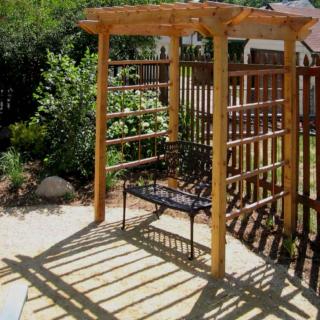

Summer sends its scorching heat out but one spot in the garden offers a cool atmosphere which is perfect for the heat-struck visitor: the canopy pergola covered in plants.
An unmistakable feeling of peace calls out from a plant-covered pergola, often set at the entrance of both house and garden.
Modern equator-facing houses designed with the goal of maximizing sunlight count planted pergolas as an essential feature.
These shade-covered terraces or decks are particularly well suited to regions where summers tend to be very hot. Pergolas with plants growing on them are also great outdoor perks for socializing. Imagine setting up a table for lunch in the half-light of cool, breathing plant shade! It is a perfect protection against the sun’s aggressive infra-red rays.
Wood, such as douglas fir, cedar or other autoclave-treated species will stand strong against rotting. Together with wrought iron, these are the two most common materials to set a pergola up, either as a lean-in or an extension of the house.

If you wish to revel in fresh soothing scents, opt for wisteria: the flowing panicles release a delicious fragrance in cooler spring, and the flowers disappear in summer when the odor would have felt too powerful and heady. Delicately fragrant honeysuckle thrive with exposures set on part sun and shade. Akebia, which bears semi-evergreen foliage, prefers full sun and releases a perfume similar to refined citrus-flower scents during spring. Clematis is as resilient as it is elegant. If you love roses, you can choose from a vast array of climbing rose tree cultivars, but avoid thorny ones! Be sure to diligently follow-up their pruning calendar to keep them under control.
Fabienne Lisse
Read also: